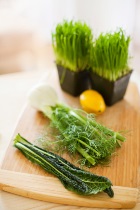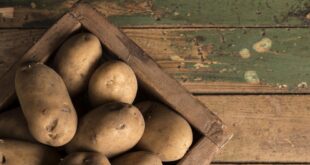 Food is a fascinating and creative business.
Food is a fascinating and creative business.
There has been an explosion of new ingredients, cooking techniques and trends in the culinary world, with one common denominator.
From the professional chef, to the home cook and the health nut, fresh herbs and associated products are a must-have for every functional kitchen.
Why fresh cooking herbs?
Cooking herbs add colour, diverse flavour and turn the most ordinary meal into an occasion. Due to their depth of colour, they contain high levels of antioxidants and require very little preparation.
Supermarkets and delis stock a wide variety of cooking herbs all year round. These are generally grown hydroponically and sold as live plants. However one of the other major trends in cooking is to grow your own produce wherever possible.
Garden centres now boast an enormous variety of herbs that can be used in cooking – so why not grow your own?
A new hobby
The beauty of herbs is that they require a relatively small area in which to grow and you can experiment growing them in tubs if you are pressed for space or don’t have your own garden.
Cooking herbs will even thrive on a windowsill if that is all the space you have.
Many herbs have medicinal properties as well, so it is worth doing your research and supercharging your meals with herbs.
Chefs and gardening experts agree that while the mostly hydroponically grown cooking herbs sold through supermarkets are great; they may lack the depth of flavour of their soil-grown counterparts.
So where do you start? Firstly, choose the herbs you cook with most frequently. Decide how much space you can dedicate to a herb garden and then get some advice from the experts at your local garden centre.
General guidelines
Some herbs have specific requirements, but generally, free draining soil, reasonable moisture, fertiliser and a good amount of sunshine will keep them happy.
While in a commercial environment mainly slow release preparations are used to feed the plant, at home natural fertilisers such as sheep droppings and garden mix are just as good. When feeding herbs you should carefully apply fertiliser to drip lines a little at a time to avoid the risk of burning leaves or stems, which can kill them.
A common mistake is to plant too many plants or crowd them too closely together. Mint and parsley are particularly vigorous growers that will often smother other herbs if not given enough room or kept under control. Once they’re established, continual harvesting of growing tips on leafy herbs promotes new growth and helps keep them in shape.
Preventing herbs from going to seed also prolongs their life. Stress from cold or dry can often bring this on, so consistent care will reduce the problem which can also be addressed by plucking seed heads as soon as they appear. Some of the hardier plants, like marjoram, rosemary and thyme will also stand a good haircut if necessary to rejuvenate them.









Elaine1951 - 18 years ago
Good morning, thanks for the very informative article. The is NO mention of Nasturium. Used to be deemed as a weed, Not anymore